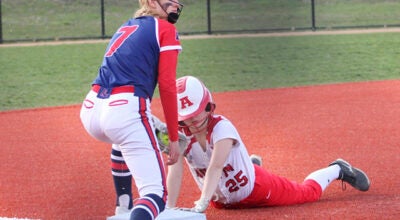Coaches are often biased with players
Published 10:17 am Thursday, February 17, 2011
Column: Jon Laging, Talking Sports
It was interesting to see Minnesota Gophers basketball coach Tubby Smith’s reaction to the recent Illinois loss. He criticized individual players and the team. Normally coaches don’t do much of that, for if the team or players don’t do well it not only reflects on the team, it reflects on the coach as well.
Coach Smith complained about a number of things, one being that Blake Hoffarber did not fake and draw fouls. He also said that the team wasn’t strong enough and the players needed a new practice facility. Is that bias? I think it might be. They had to cross the street to lift weights. Come on, Tubby, they should be able to make that long trek. And Tubby, who has been coaching Hoffarber for the past four years? Perhaps you should share some of the blame for what he does or does not do.
Emotions distort facts, and perhaps Tubby should not have disparaged his team after a tough loss. Sometimes what seems easy to a coach may be difficult physically or mentally for a player. One of the most difficult aspects of coaching is to separate the expectations of a player from what they are actually capable of doing. Bias? Watching the team’s lack of success has to be hard, for coaches teach a player to be better and to improve. The Gophers have not improved that much, and it must be very frustrating. So Tubby blew his stack. However it’s always possible that Tubby called them out thinking that would be the push they needed to improve. If that’s the case, I hope that coach Smith is proven right and the Gophers react favorably to their scolding. I would guess that it was better to try a tirade rather than sit back and do nothing.
Twins manager Ron Gardenhire has had success in that he is mostly able to separate facts from preconceived ideas. I admire previous manager Tom Kelly and Gardenhire because they did not always do what conventional wisdom called for, but rather what they thought was right for the team and the player. But they both have their prejudices. Gardenhire loves scrappy, poor hitting, good fielding middle infielders. Maybe because he was one himself. Nick Punto comes to mind. One of the worst hitting players in the major leagues with a low batting average and little or no power. Yet there was a couple of years when he had the third most at bats of any Twins player. I think one reason Punto was not re-signed is that general manager Bill Smith felt that if Punto was not on the team Gardenhire couldn’t play him.
Another example of Gardenhire’s bias might be the first game of the playoffs last year when the Twins had a three-run lead with Francisco Liriano pitching. The Yankees mounted a comeback and the question was leave Liriano in or take him out? A harsh manager, a Captain Hook might yank him. Gardenhire did not. Liriano did not hold the Yankees. Why didn’t Gardenhire take him out? Some might say that Gardy is a player’s manager, that he wanted Liriano to succeed. The thinking perhaps being that if Liriano pitched out of the jam in a pressure situation, he would be a better pitcher in the future.
Gardy’s what’s-best-for-the-player approach has succeeded during the past regular seasons. Will it ever succeed during playoffs? Will his players’ bias eventually lead to a World Series? I’d like to think so for the team is molded in the manager’s image and they are a pleasure to watch and follow.
Jon Laging’s column runs every Thursday in the Tribune





